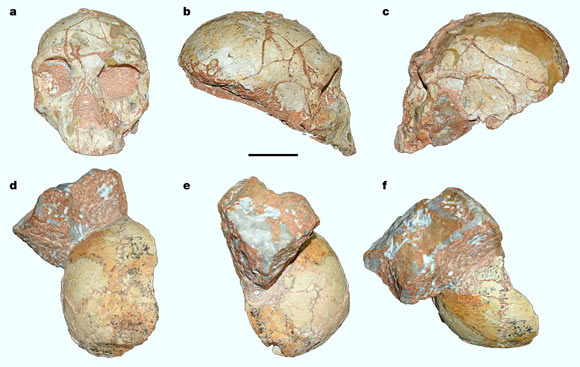A 210,000-year-old partial skull found in southern Greece about four decades ago has been identified as the earliest example of anatomically modern Homo sapiens discovered outside the African continent. The discovery, described in a paper in the journal Nature, pushes back the known date of our species in Europe by more than 150,000 years.
“Our results suggest that at least two groups of people lived in the Middle Pleistocene in what is now southern Greece: an early Homo sapiens population, followed by a Neanderthal population,” said Professor Katerina Harvati, a researcher at the Senckenberg Centre for Human Evolution and Palaeoenvironment at the University of Tübingen, Germany.
Professor Harvati and colleagues re-examined two fossilized human skulls discovered in 1978 in Apidima Cave, Mani, southern Greece.
They virtually reconstructed both specimens, dubbed Apidima 1 and Apidima 2, and conducted detailed comparative description and geometric morphometric analyses.
They also used U-series radiometric methods to date the fossils and the surrounding sediments.
“Apidima 2 is about 170,000 years old. We could tell that it was a Neanderthal,” Professor Harvati said.
“Surprisingly, Apidima 1 is even older, about 210,000 years old, but has no Neanderthal features. Rather, we revealed a mixture of modern human and primitive features, indicating an early Homo sapiens.”

Apidima 1 and 2 skulls: (a-c) Apidima 2, frontal, right lateral and left lateral views; (d-f) Apidima 1, posterior, lateral and superior views. Scale bar – 5 cm. Image credit: Harvati et al, doi: 10.1038/s41586-019-1376-z.
The findings support the hypothesis that early Homo sapiens spread out of Africa multiple times.
“The Apidima 1 skull shows an early dispersal happened earlier than we thought, and also reached further geographically, into Europe itself,” Professor Harvati said.
“The specimen is more than 150,000 older than the oldest modern human specimens known from Europe until now.”
“We hypothesize that, as in the Near East, the early modern human population represented by Apidima 1 was probably replaced by Neanderthals, whose presence in southern Greece is well documented, including by the Apidima 2 skull from the same site.”
“But Neanderthals also had to make way. In the late Paleolithic, some 40,000 years ago, newly-arrived modern humans settled in the region, as in the rest of Europe. Their presence is documented by finely-worked stone tools and other finds. Neanderthals became extinct around this time.”
“This discovery highlights the importance of Southeast Europe for human evolution.”
_____
Katerina Harvati et al. Apidima Cave fossils provide earliest evidence of Homo sapiens in Eurasia. Nature, published online July 10, 2019; doi: 10.1038/s41586-019-1376-z








